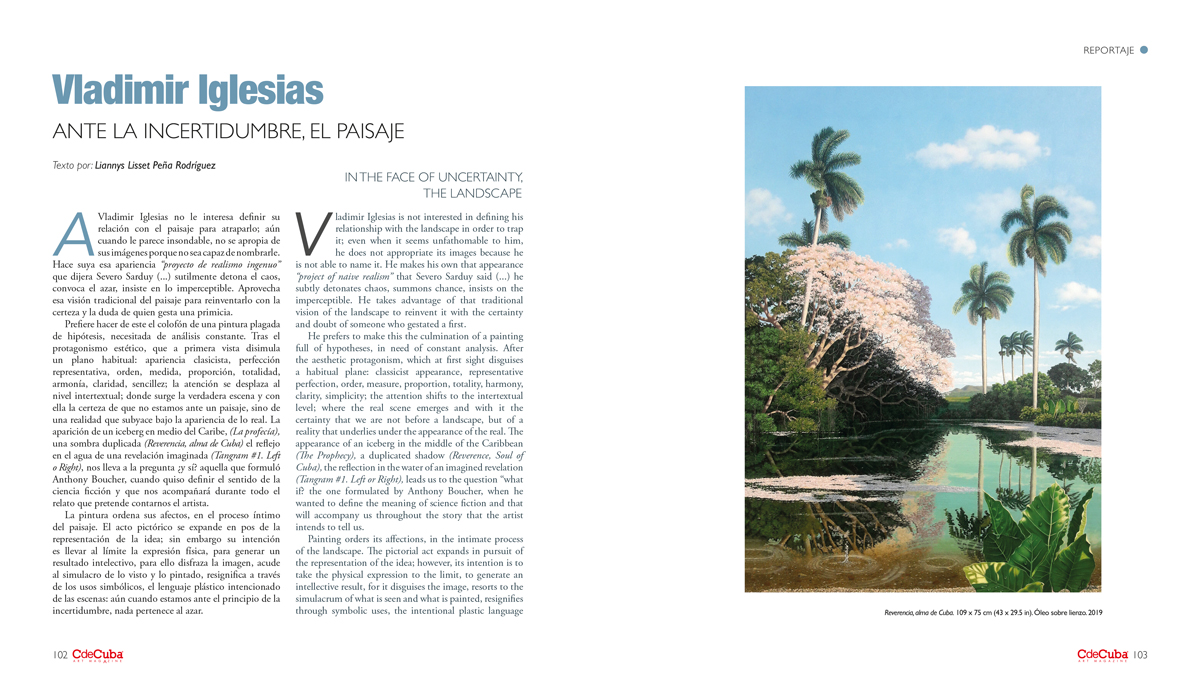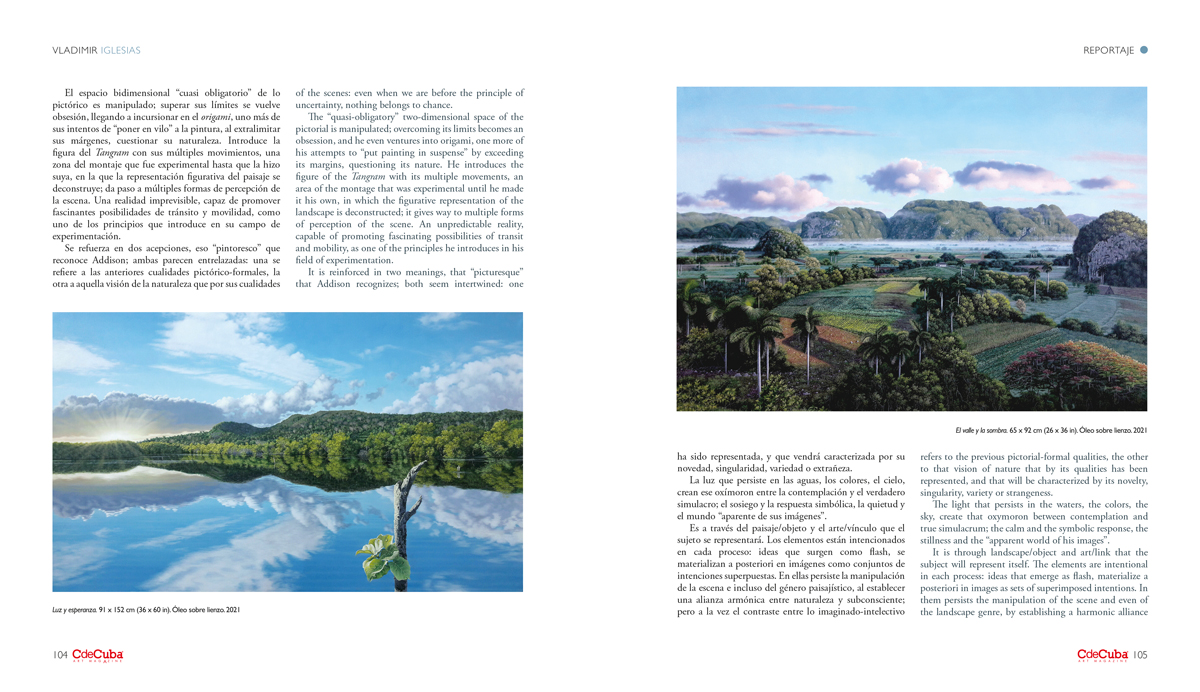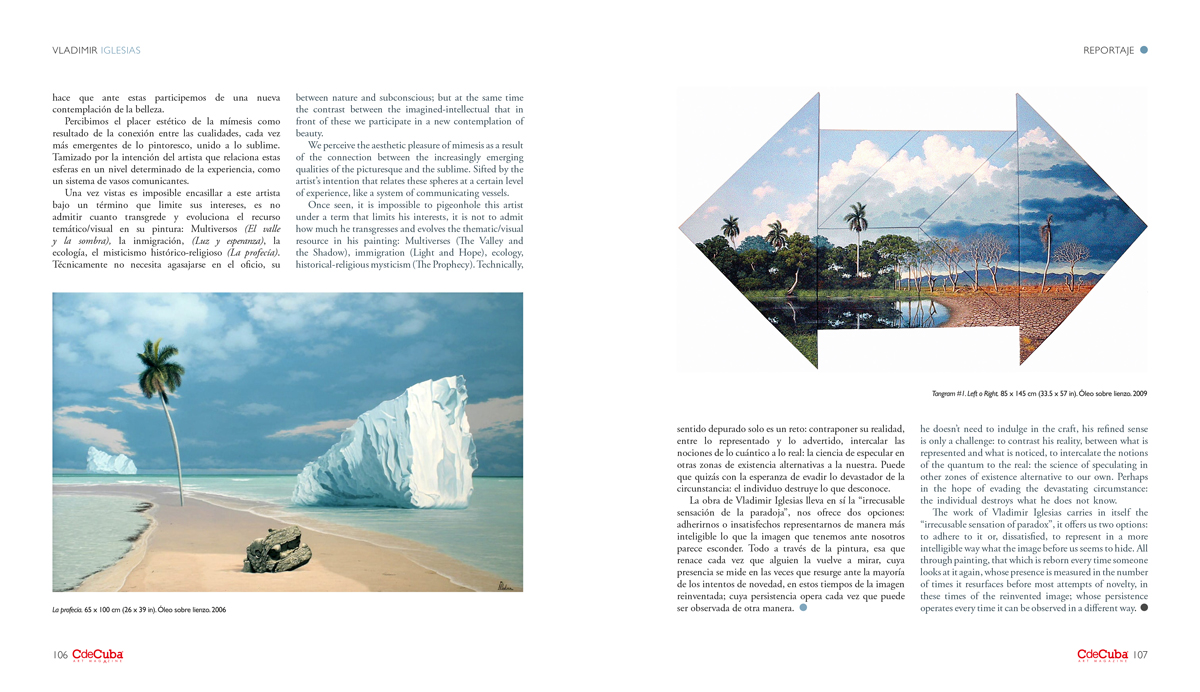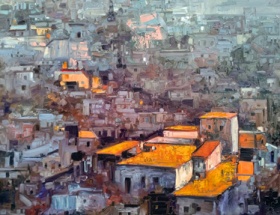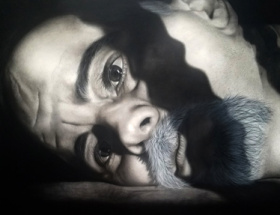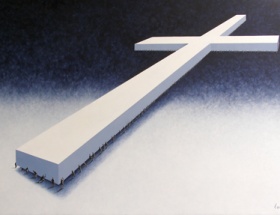In the Face of Uncertainty, the Landscape
By Liannys Lisset Peña Rodríguez
Vladimir Iglesias is not interested in defining his relationship with the landscape in order to trap it; even when it seems unfathomable to him, he does not appropriate its images because he is not able to name it. He makes his own that appearance “project of naive realism” that Severo Sarduy said (…) he subtly detonates chaos, summons chance, insists on the imperceptible. He takes advantage of that traditional vision of the landscape to reinvent it with the certainty and doubt of someone who gestated a first.
He prefers to make this the culmination of a painting full of hypotheses, in need of constant analysis. After the aesthetic protagonism, which at first sight disguises a habitual plane: classicist appearance, representative perfection, order, measure, proportion, totality, harmony, clarity, simplicity; the attention shifts to the intertextual level; where the real scene emerges and with it the certainty that we are not before a landscape, but of a reality that underlies under the appearance of the real. The appearance of an iceberg in the middle of the Caribbean (The Prophecy), a duplicated shadow (Reverence, Soul of Cuba), the reflection in the water of an imagined revelation (Tangram #1. Left or Right), leads us to the question “what if? the one formulated by Anthony Boucher, when he wanted to define the meaning of science fiction and that will accompany us throughout the story that the artist intends to tell us.
Painting orders its affections, in the intimate process of the landscape. The pictorial act expands in pursuit of the representation of the idea; however, its intention is to take the physical expression to the limit, to generate an intellective result, for it disguises the image, resorts to the simulacrum of what is seen and what is painted, resignifies through symbolic uses, the intentional plastic language of the scenes: even when we are before the principle of uncertainty, nothing belongs to chance.
The “quasi-obligatory” two-dimensional space of the pictorial is manipulated; overcoming its limits becomes an obsession, and he even ventures into origami, one more of his attempts to “put painting in suspense” by exceeding its margins, questioning its nature. He introduces the figure of the Tangram with its multiple movements, an area of the montage that was experimental until he made it his own, in which the figurative representation of the landscape is deconstructed; it gives way to multiple forms of perception of the scene. An unpredictable reality, capable of promoting fascinating possibilities of transit and mobility, as one of the principles he introduces in his field of experimentation.
It is reinforced in two meanings, that “picturesque” that Addison recognizes; both seem intertwined: one refers to the previous pictorial-formal qualities, the other to that vision of nature that by its qualities has been represented, and that will be characterized by its novelty, singularity, variety or strangeness.
The light that persists in the waters, the colors, the sky, create that oxymoron between contemplation and true simulacrum; the calm and the symbolic response, the stillness and the “apparent world of his images”.
It is through landscape/object and art/link that the subject will represent itself. The elements are intentional in each process: ideas that emerge as flash, materialize a posteriori in images as sets of superimposed intentions. In them persists the manipulation of the scene and even of the landscape genre, by establishing a harmonic alliance between nature and subconscious; but at the same time the contrast between the imagined-intellectual that in front of these we participate in a new contemplation of beauty.
We perceive the aesthetic pleasure of mimesis as a result of the connection between the increasingly emerging qualities of the picturesque and the sublime. Sifted by the artist’s intention that relates these spheres at a certain level of experience, like a system of communicating vessels.
Once seen, it is impossible to pigeonhole this artist under a term that limits his interests, it is not to admit how much he transgresses and evolves the thematic/visual resource in his painting: Multiverses (The Valley and the Shadow), immigration (Light and Hope), ecology, historical-religious mysticism (The Prophecy). Technically, he doesn’t need to indulge in the craft, his refined sense is only a challenge: to contrast his reality, between what is represented and what is noticed, to intercalate the notions of the quantum to the real: the science of speculating in other zones of existence alternative to our own. Perhaps in the hope of evading the devastating circumstance: the individual destroys what he does not know.
The work of Vladimir Iglesias carries in itself the “irrecusable sensation of paradox”, it offers us two options: to adhere to it or, dissatisfied, to represent in a more intelligible way what the image before us seems to hide. All through painting, that which is reborn every time someone looks at it again, whose presence is measured in the number of times it resurfaces before most attempts of novelty, in these times of the reinvented image; whose persistence operates every time it can be observed in a different way.
